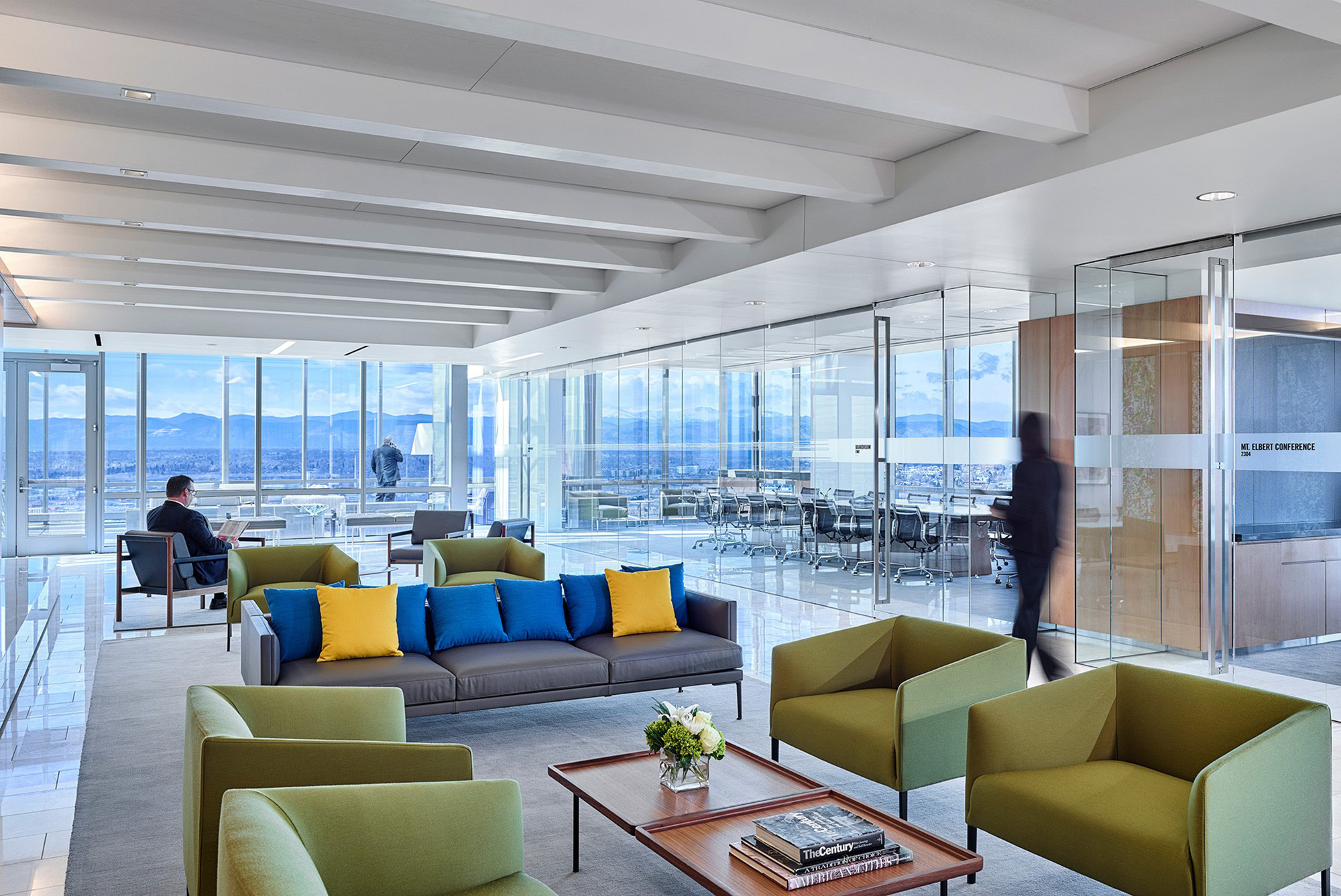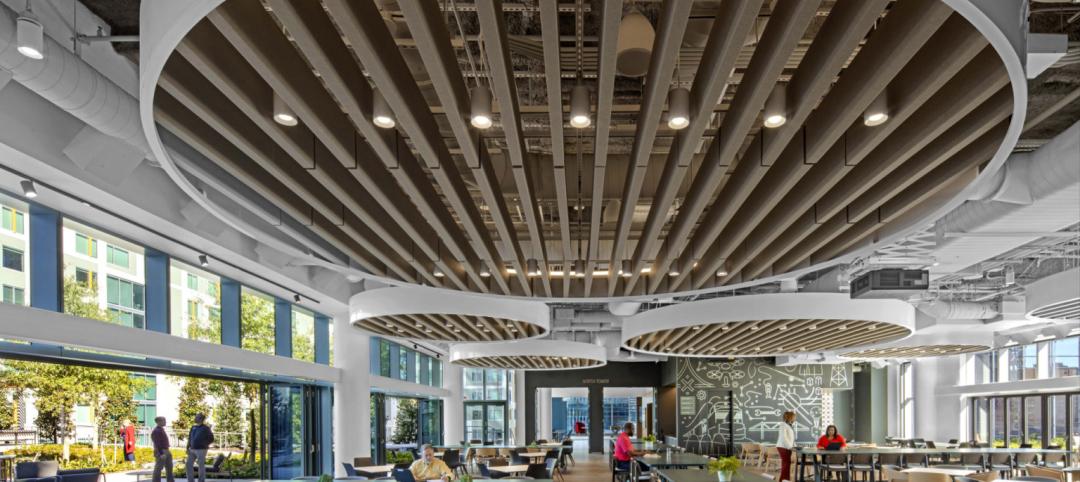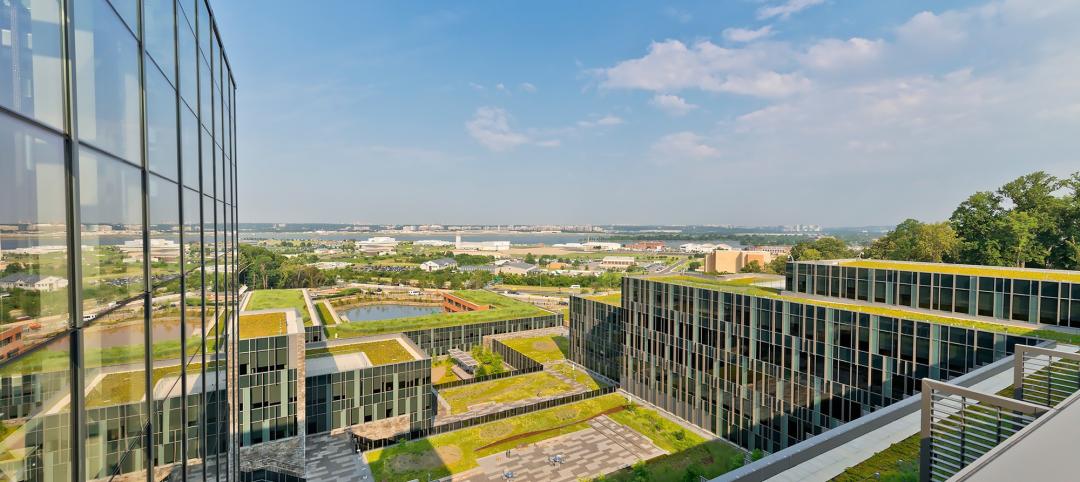Law firms differ from many professional organizations in their need for private offices to meet confidentiality with clients and write and review legal documents in quiet, focused environments. Yet the legal profession also is not immune to the challenges many industries are experiencing in adapting to hybrid work, attracting and retaining top talent and meeting calls for greater equity and inclusion in the workplace.
To examine these issues and more, HOK hosted a LinkedIn Live with design leaders from across our North American studios to learn how they assist their law firm clients in designing modern and responsive workplaces.
The entire discussion was moderated by Sabret Flocos (Washington, D.C.) with panelists Caitlin Turner (Toronto), Amy English (Houston) and Cara MacArthur (Los Angeles). Here are six key trends identified in the discussion.
1. Single-Size Offices
While law firms continue to require private, individual offices for their attorneys, many law firms are shifting to same-size offices for partners and associates. Standard-size offices present law firms several advantages, including:
- Making it easier to adapt the workplace for future changes, such as converting under-utilized offices into conference rooms and other shared amenities.
- Reducing the overall square footage of the workplace.
- Fostering a greater sense of equity, which is key for recruiting and retaining staff.
“With one-size officing, we are shrinking the ‘I’ space and returning it to more ‘we’ space,” said Caitlin Turner. “One-size offices allow you to optimize your floor plate and control real estate costs. You create a more high-performance office that supports people’s best work.”
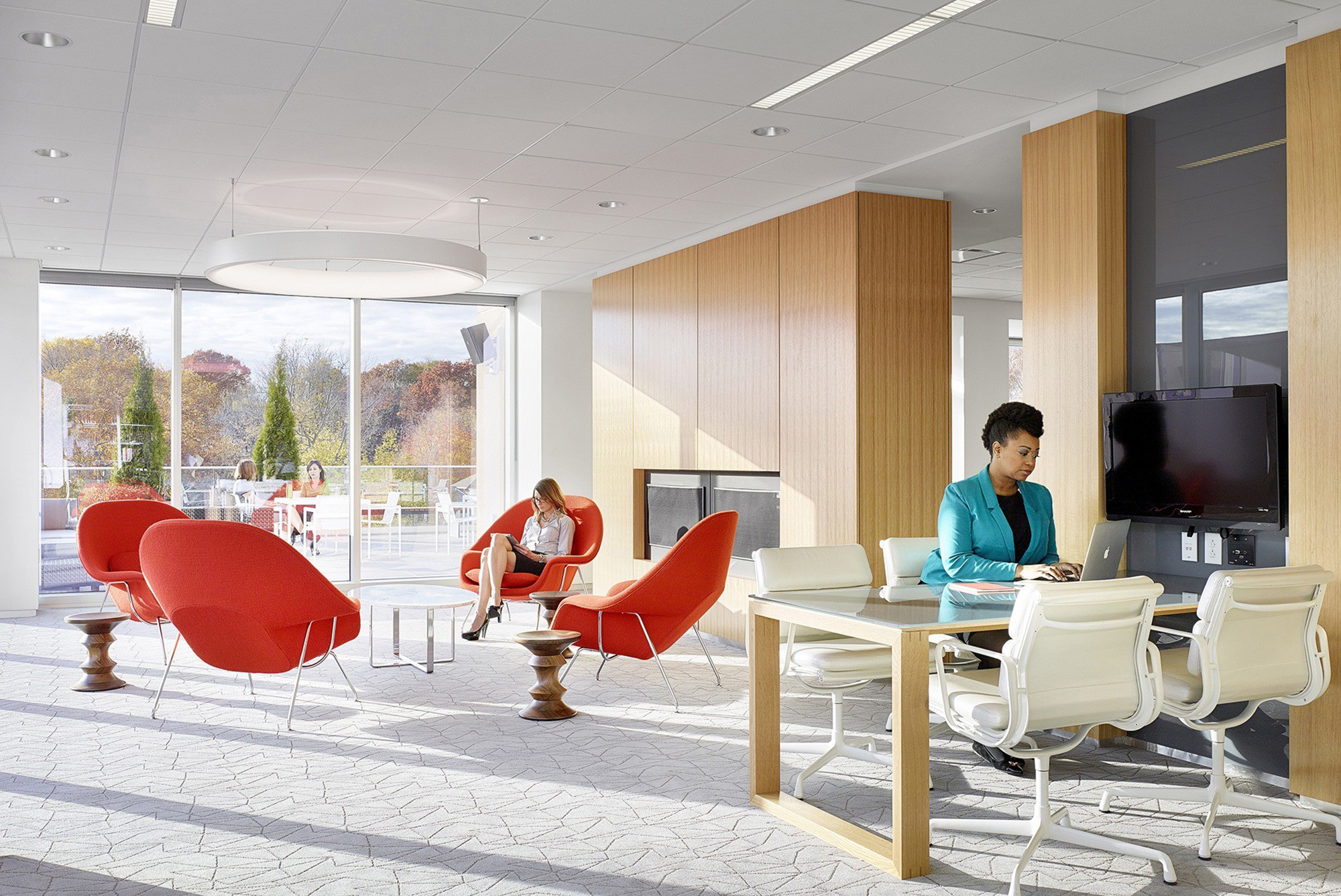
Polsinelli’s Kansas City headquarters includes collaborative seating areas and sit-stand workstations. Multipurpose training rooms provide space for mock trials and case strategy.
2. Removing Paper and Admin Services
In the past, law firms required a large amount of space to store legal documents and house administrative staff. That, too, is changing as firms increasingly look to digitize documents and cut down on administrative services within the office.
“Technology is enabling us to free up space,” said Amy English. “Software now allows attorneys to perform certain admin tasks. We also are seeing more sharing of administrative services—from a 4 to 1 ratio in the past to around 7 to 1 today. At the same time, more admins are allowed to work remotely, which provides significant real estate savings, especially when coupled with reductions in paper storage.”
3. Flexibility and Amenities
Law offices are adapting to hybrid work with more multi-purpose shared spaces, which can be used for town hall meetings, team collaboration, solo work or client-facing events. These hospitality-inspired spaces share a few common attributes, said Cara MacArthur. They are welcoming, flexible and tech-enabled. Some law firms are even incorporating desk and office-sharing into their workplace strategy, which frees up additional space for shared amenities.
“Our clients want more collaborative space, whether it’s a café area or some other type of environment where people can come together and spend time face to face,” said MacArthur. “At the same time, they need to be well-designed, particularly if they’re client-facing. The client relationship is central to the success of the firm.”
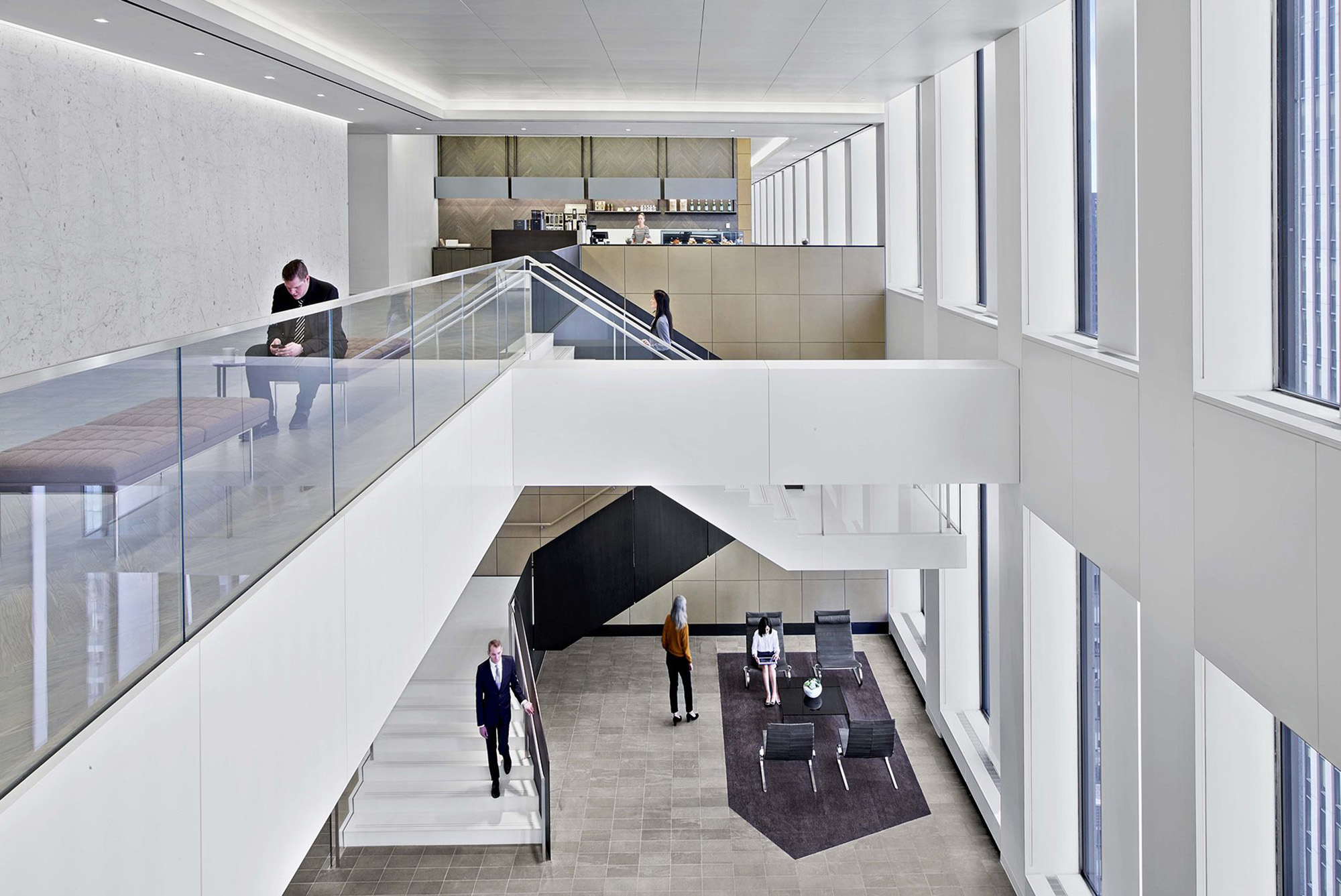
White & Case’s Manhattan office features a dramatic staircase connecting the reception areas to amenities including a coffee bar, restaurant-style dining, a wellness center and a fitness facility.
4. Video Conferencing
Lawyers and their teams increasingly use video to connect with clients and colleagues. Many courts are continuing the practice (begun during the pandemic) of allowing some hearings to occur via video. But video spaces within the office need to be carefully planned and designed. They require great lighting and acoustics, clean backgrounds, and must be free from background noise and interruptions.
“Courts are very particular about what can be seen and heard in video meetings,” said Turner. “When we’re thinking about designing spaces for video, we need to think about sightlines, acoustics and the outcome you’re hoping to achieve from the meeting.”
5. Dark Wood is Out (Unless That’s You!)
Office design is an extension of brand messaging. And while some firms still prefer a more traditional look, many more are seeking a workplace that projects a future-forward image. These spaces often include interior glass walls, light-colored woods, clean sightlines and contemporary furnishings.
“There’s a level of professionalism that needs to be conveyed in law firm design, but that doesn’t mean it has to have the cherry-wood finishes and heavy furniture of your grandfather’s law firm,” said English. “By contrast, we’re designing spaces today with more natural light, cleaner finishes, less clutter and softer touches.”
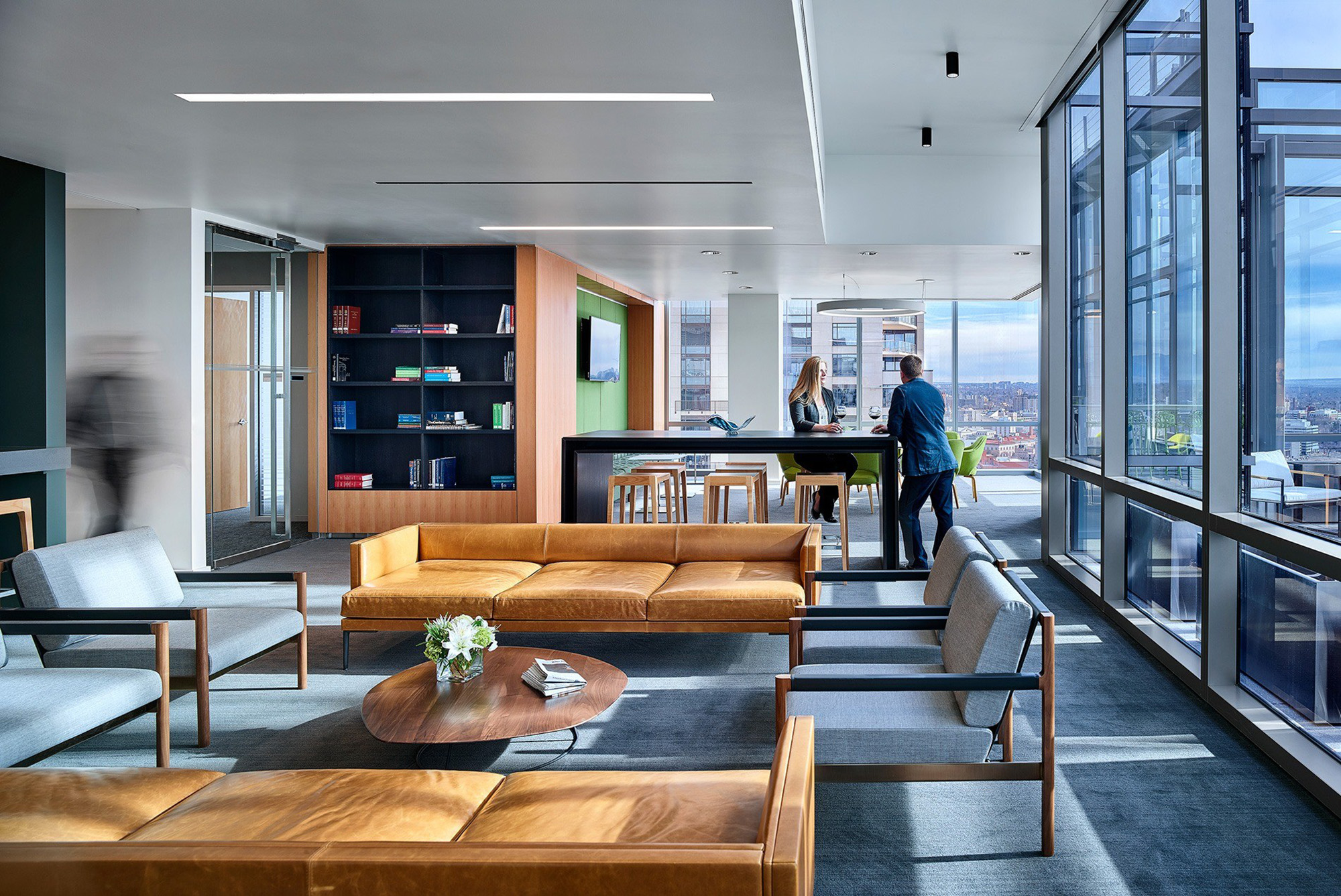
Polsinelli’s Denver law office features generous hospitality-centered corridors with social spaces, work islands, coffee bars and conversation niches.
6. Wellness and DEI
Like professionals in other fields, today’s attorneys and paralegals want their offices to be more than just a place to work. The space needs to support their health and well-being and foster the workplace diversity, equity and inclusion they’ve come to expect.
Design can help accomplish these goals in a variety of ways. For example, many law firms are actively incorporating biophilic design (injecting daylight, plants and other natural elements) into their workplaces to help lower stress and improve well-being. Other firms offer their workplace amenities to nonprofits and community groups for use for meetings, fundraisers and other events.
“The pandemic forced law firms—like many professions—to reconsider their approach to wellness and mental well-being,” said MacArthur. We’re now seeing the response to that in the workplace with more on-site fitness centers, refueling stations and specialized spaces like prayer and mothering rooms. And in many ways, these wellness spaces also tie into DEI. They make for a healthier and more inclusive workplace.”
More from Author
HOK | Oct 18, 2024
7 design lessons for future-proofing academic medical centers
HOK’s Paul Strohm and Scott Rawlings and Indiana University Health’s Jim Mladucky share strategies for planning and designing academic medical centers that remain impactful for generations to come.
HOK | Jun 6, 2024
HOK presents neurodiversity research and design guidelines at SXSW 2024
Workplace experts share insights on designing inclusive spaces that cater to diverse sensory processing needs.
HOK | Apr 2, 2024
How university rec centers are evolving to support wellbeing
In a LinkedIn Live, Recreation & Wellbeing’s Sadat Khan and Abby Diehl joined HOK architect Emily Ostertag to discuss the growing trend to design and program rec centers to support mental wellbeing and holistic health.
HOK | Jan 25, 2024
40 Under 40 Class of 2023 winner Kimberly Dowdell inaugurated as AIA 2024 President
The American Institute of Architects (AIA) has announced the inauguration of Kimberly Dowdell, AIA, NOMAC, NCARB, LEED AP BD+C, Principal and Director of Strategic Relationships at HOK and BD+C 40 Under 40 superstar, as its 100th president.
HOK | Jul 13, 2023
Deep green retrofits: Updating old buildings to new sustainability standards
HOK’s David Weatherhead and Atenor’s Eoin Conroy discuss the challenges and opportunities of refurbishing old buildings to meet modern-day sustainability standards.
HOK | Jun 5, 2023
Office design in the era of Gen Z, AI, and the metaverse
HOK workplace and interior design experts Kay Sargent and Tom Polucci share how the hybrid office is evolving in the era of artificial intelligence, Gen Z, and the metaverse.
HOK | May 5, 2023
9 workplace design trends for 2023
HOK Director of WorkPlace Kay Sargent and Director of Interiors Tom Polucci discuss the trends shaping office design in 2023.
HOK | Apr 4, 2023
6 examples of modern college training facilities
HOK discusses the future of college training facilities, with six design takeaways derived from a discussion between Dan Radakovich, Director of Athletics at the University of Miami, and Trevor Bechtold, Director, HOK’s Sports + Recreation + Entertainment practice.
HOK | Feb 23, 2023
Using data to design the sports venue of the future
Former video game developer Abe Stein and HOK's Bill Johnson discuss how to use data to design stadiums and arenas that keep fans engaged and eager to return.
HOK | Jan 23, 2023
How regenerative design is driving AEC industry innovation
HOK's Sean Quinn and Microsoft's JoAnn Garbin discuss the next step of sustainability: regenerative design.

